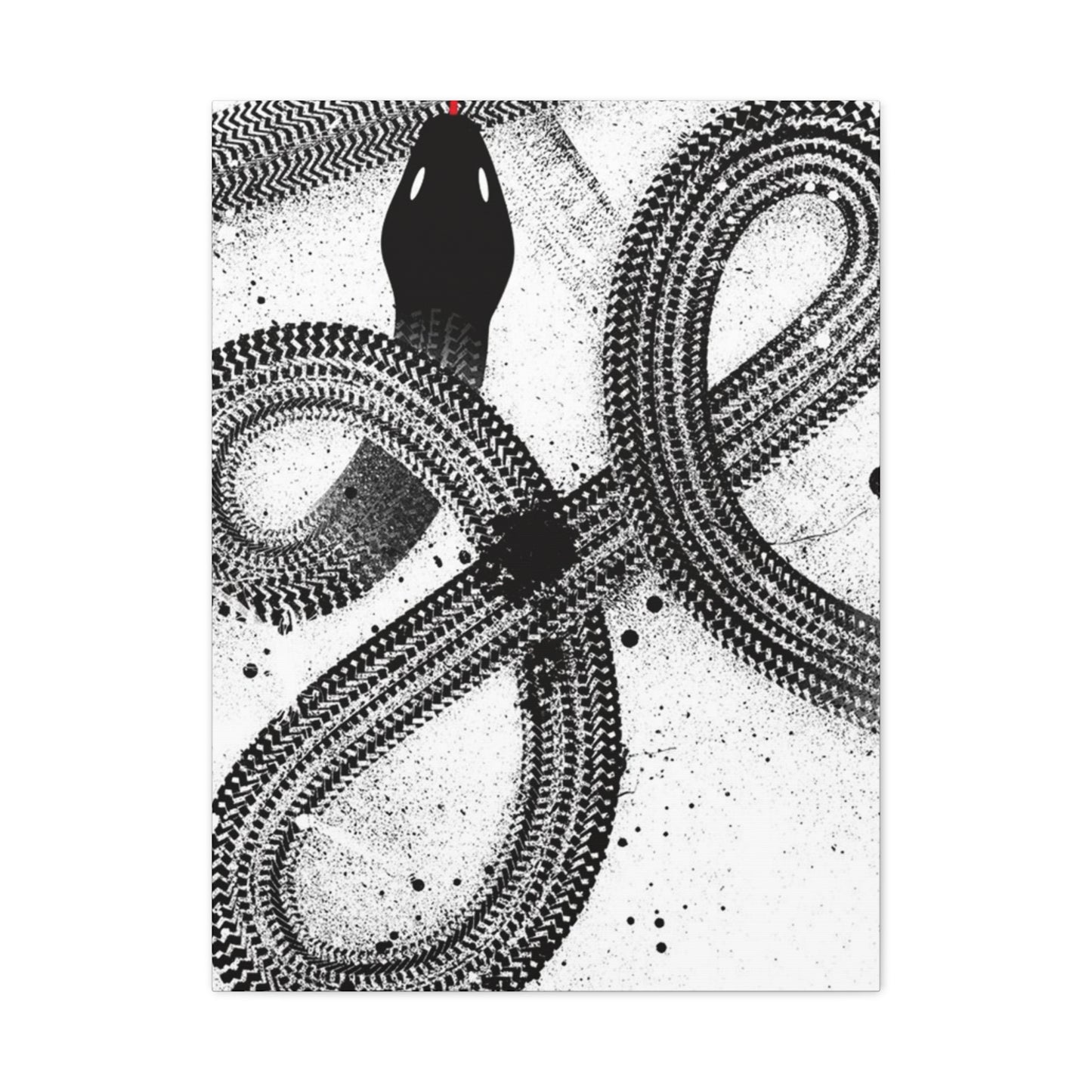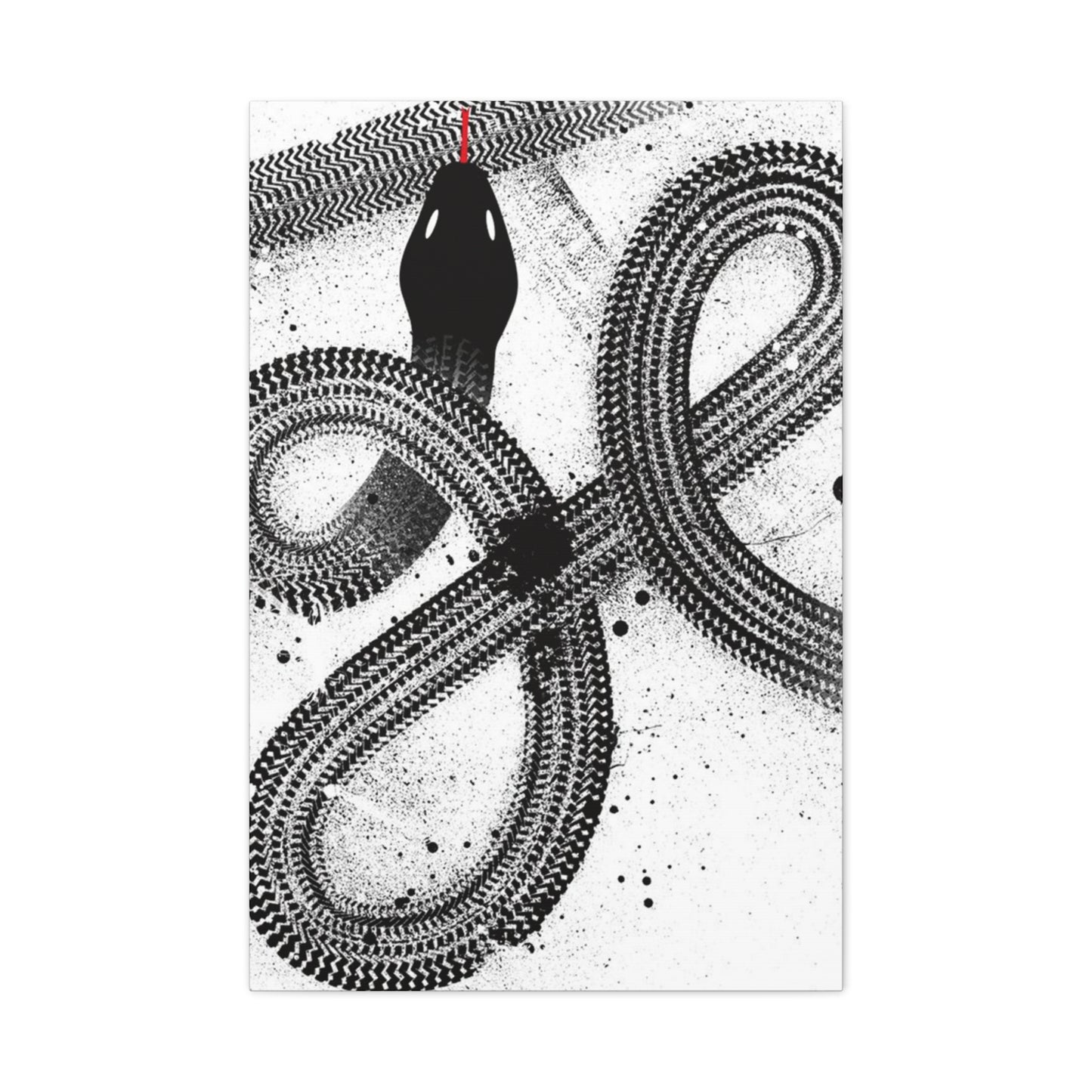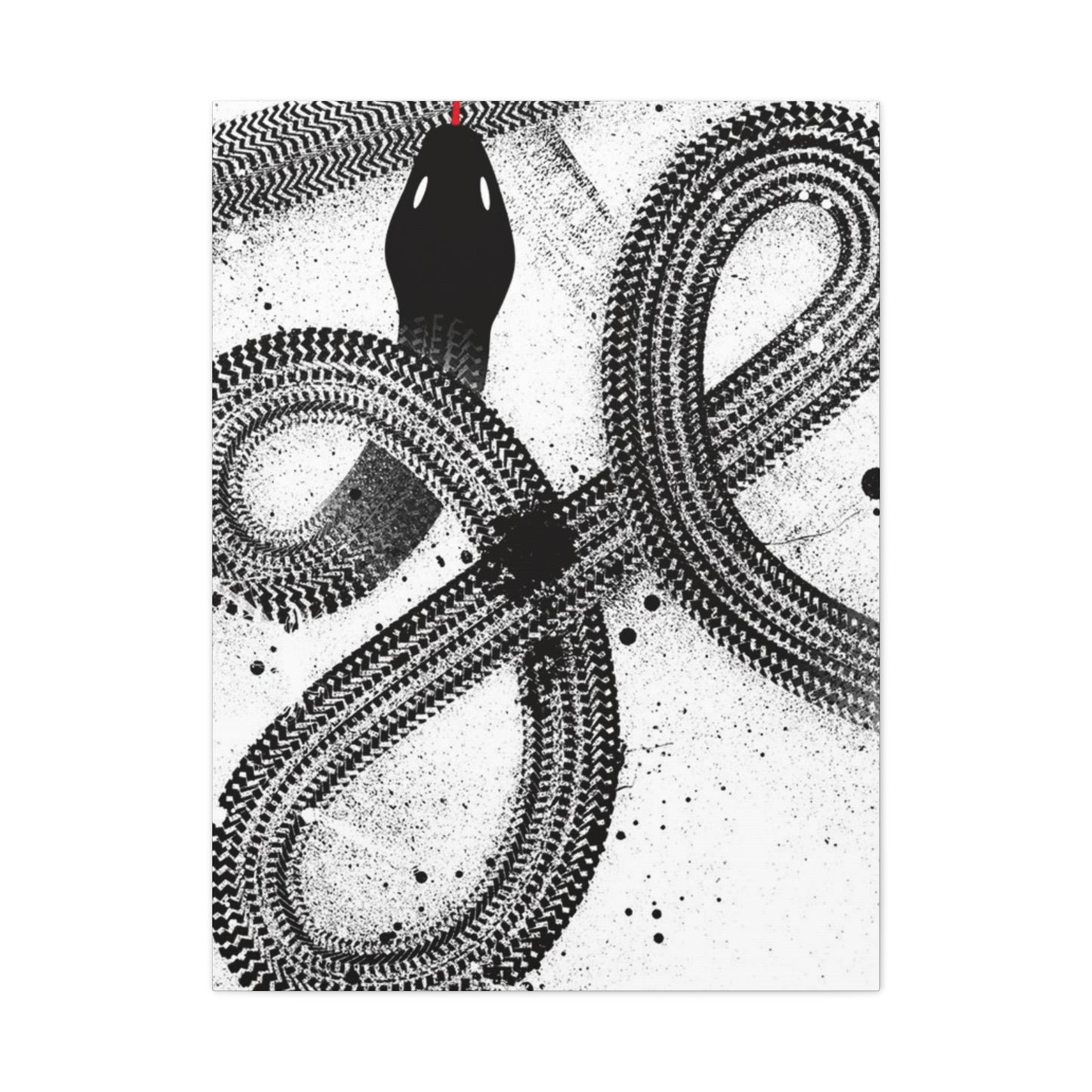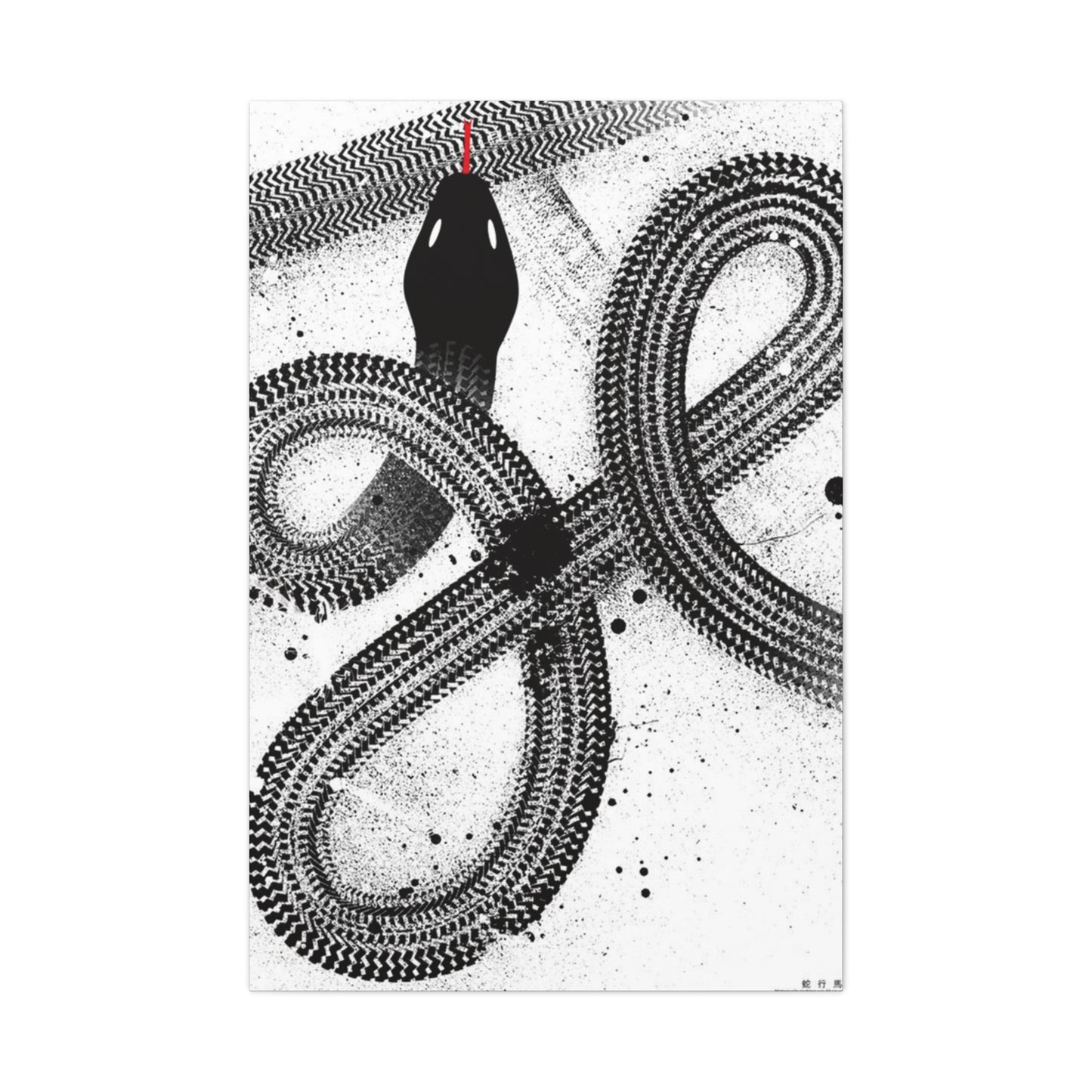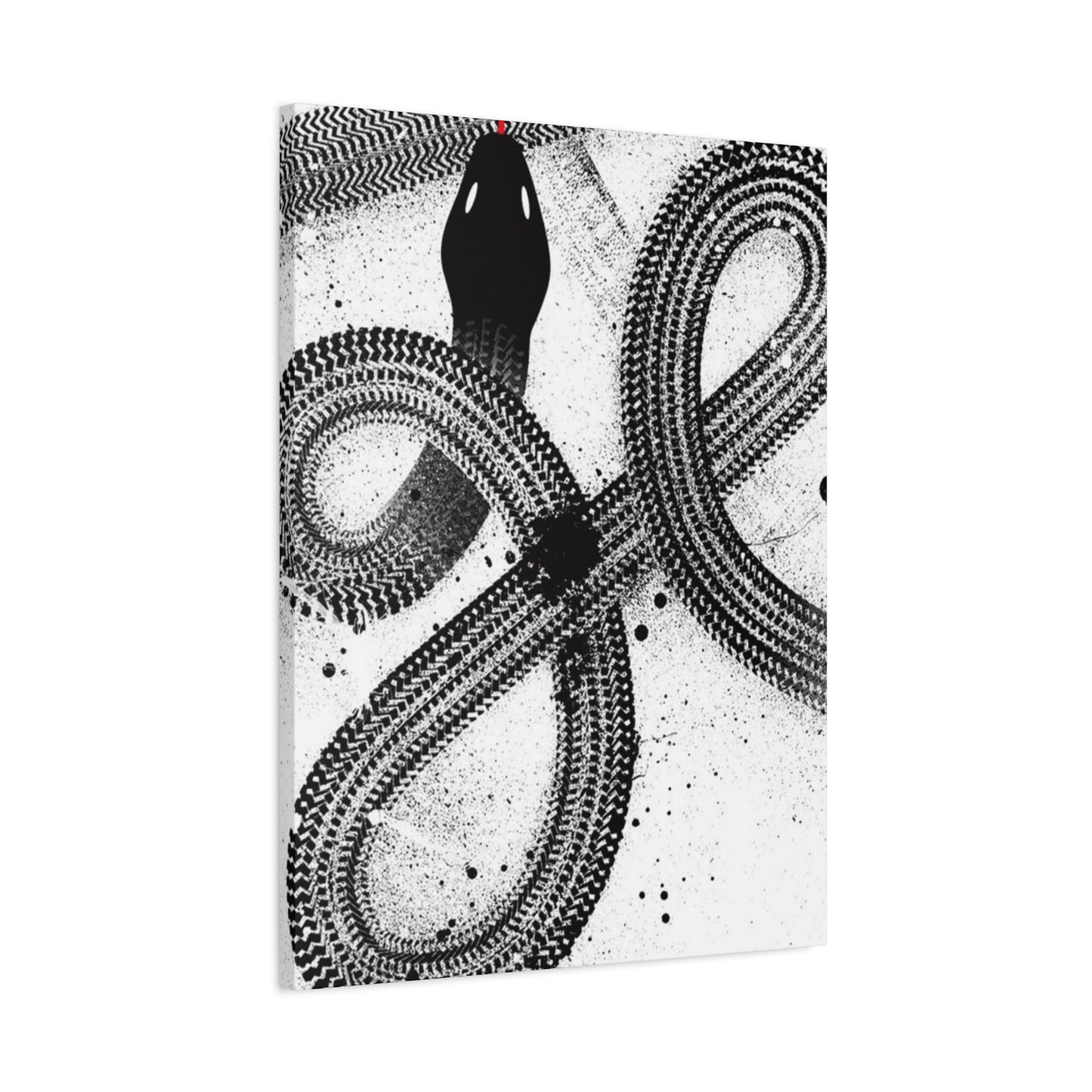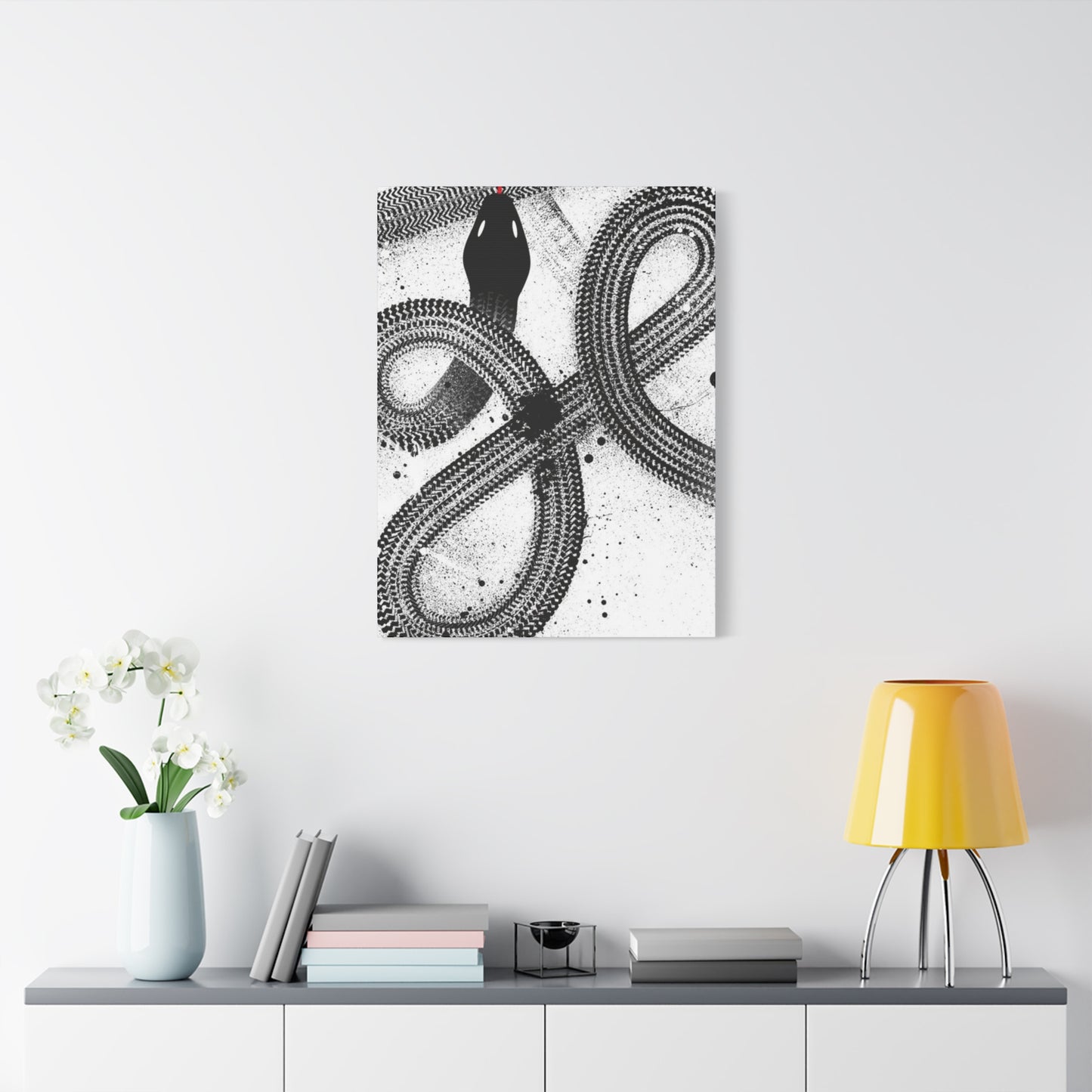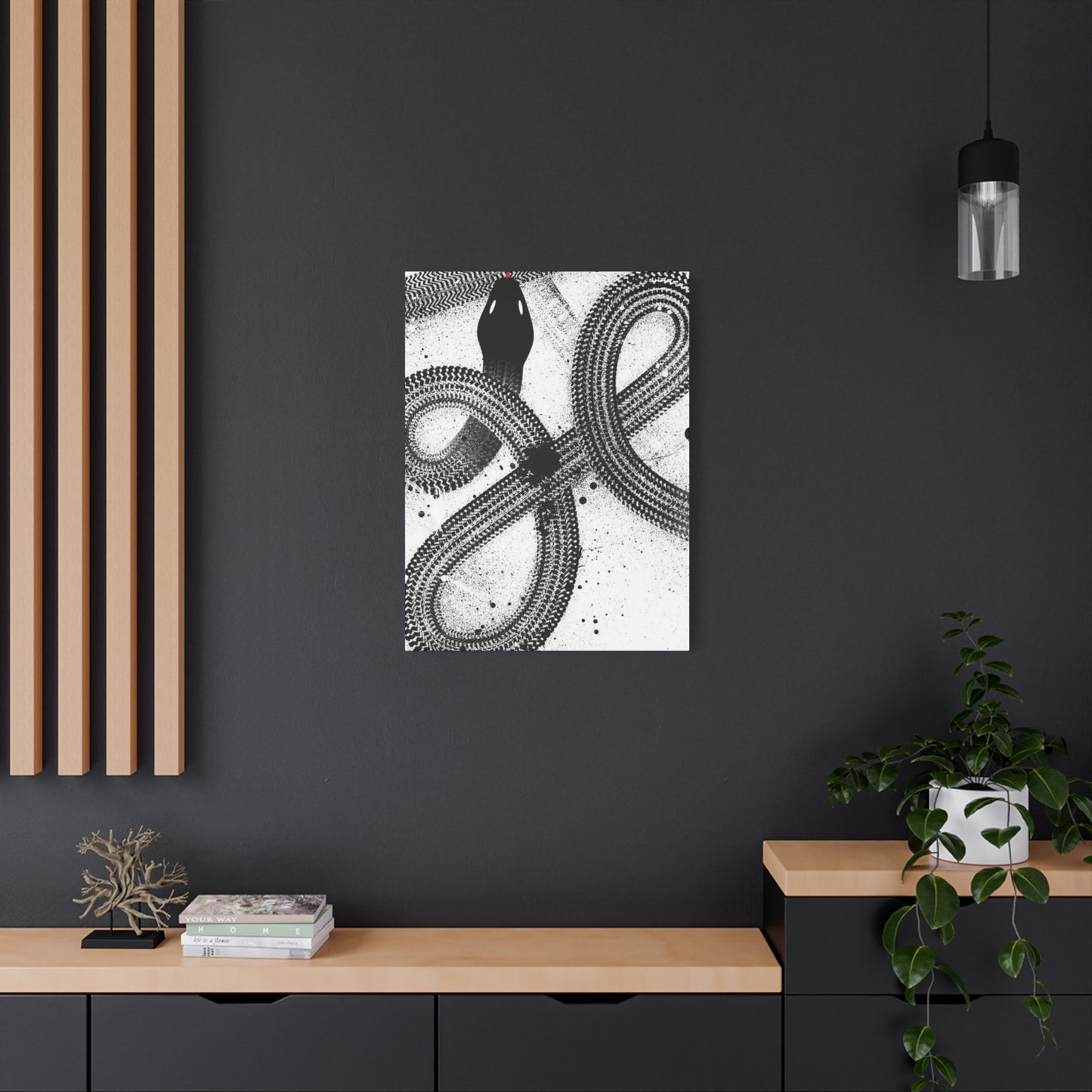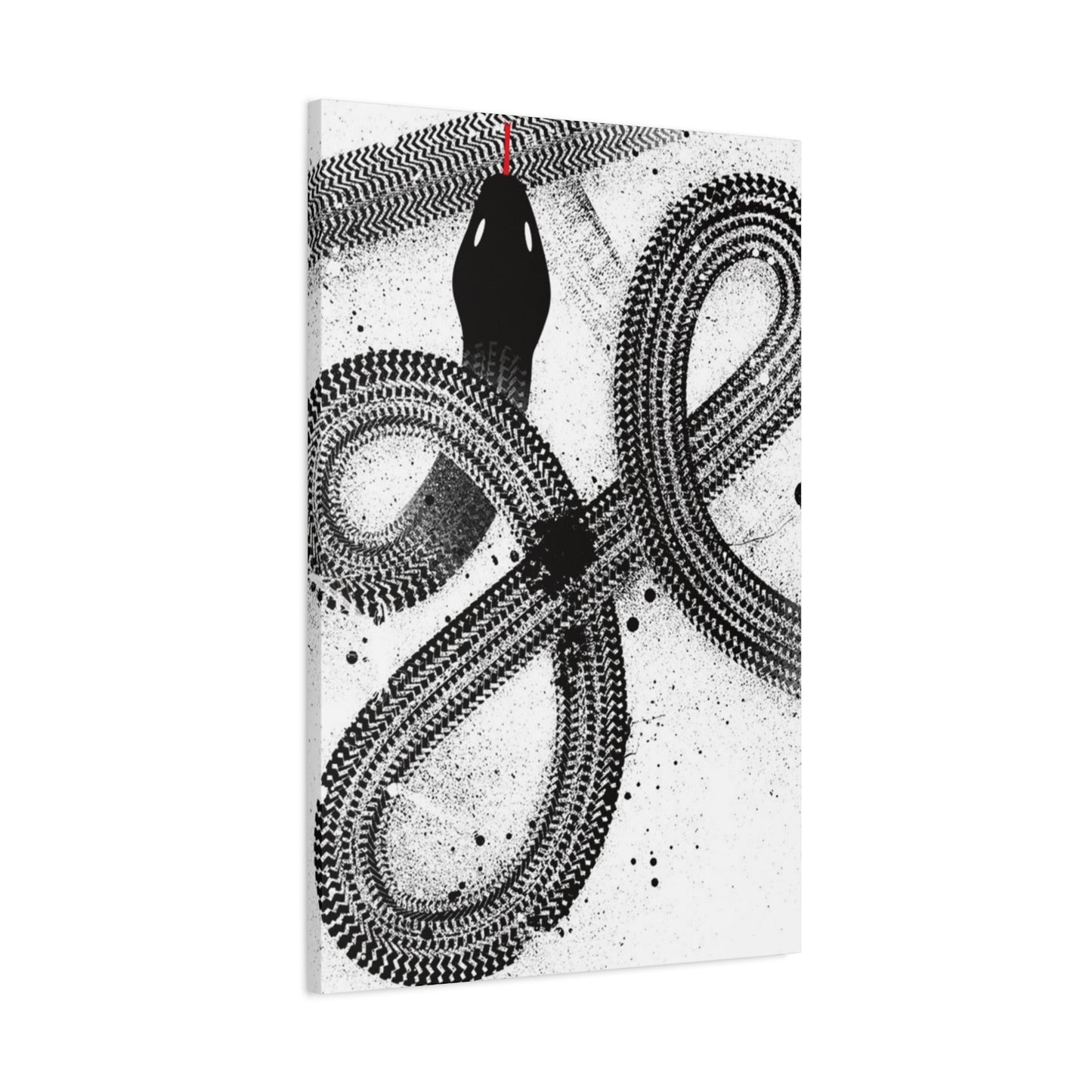Incorporating Snake Wall Art: A Guide to Serpentine Home Styling
The world of interior design has witnessed a remarkable surge in unconventional artistic expressions, with serpentine motifs emerging as a captivating focal point for contemporary homes. Snake wall art represents far more than mere aesthetic appeal; it embodies a profound connection between ancient symbolism and modern artistic sensibilities. This comprehensive exploration delves into the multifaceted realm of serpentine decorative elements, offering insights into their application across diverse interior environments while maintaining harmony with existing design philosophies.
The fascination with snake imagery transcends cultural boundaries, weaving through historical narratives that span millennia. From ancient Egyptian cobra representations symbolizing divine protection to contemporary minimalist interpretations that celebrate the creature's elegant form, serpentine art continues to captivate modern homeowners seeking distinctive decorative solutions. The sinuous curves and mesmerizing patterns inherent in snake imagery provide endless opportunities for creative expression within residential spaces.
Contemporary interior designers increasingly recognize the versatility of reptilian motifs in creating dynamic visual narratives. These artistic elements serve multiple purposes, functioning simultaneously as conversation starters, spiritual symbols, and sophisticated design statements. The growing popularity of biophilic design principles has further elevated the status of nature-inspired artwork, with serpentine pieces offering a unique blend of organic beauty and contemporary edge.
The psychological impact of serpentine imagery cannot be overlooked when considering its integration into living spaces. These powerful symbols evoke responses ranging from primal fascination to spiritual reverence, making them particularly effective in creating memorable and emotionally resonant environments. Understanding these deeper connections enables homeowners to make informed decisions about incorporating such distinctive elements into their personal sanctuaries.
Serpentine Elements in Bohemian Interior Aesthetics
The bohemian design movement embraces eclectic combinations of textures, patterns, and cultural influences, making it an ideal backdrop for incorporating serpentine wall art. Boho interiors naturally accommodate bold artistic statements that might overwhelm more traditional design schemes, allowing snake imagery to flourish within these creative environments. The free-spirited nature of bohemian aesthetics perfectly complements the mystical and transformative symbolism associated with serpentine motifs.
When selecting snake wall art for bohemian spaces, consider pieces that emphasize organic forms and earthy color palettes. Hand-painted serpentine canvases featuring watercolor techniques or mixed media compositions align beautifully with the authentic, artisanal quality that defines boho style. These pieces should feel spontaneous and expressive rather than rigidly structured, reflecting the movement's emphasis on creative freedom and personal expression.
The layered approach characteristic of bohemian design allows for creative combinations of serpentine elements with other nature-inspired motifs. Consider grouping snake artwork alongside botanical prints, mineral specimens, and textile wall hangings to create rich, multi-dimensional displays. This approach prevents any single element from dominating the space while maintaining visual cohesion through shared organic themes.
Texture plays a crucial role in bohemian interiors, and serpentine wall art can contribute significantly to this aspect. Seek pieces that incorporate dimensional elements such as raised paint techniques, fabric applications, or natural materials like wood and stone. These textural variations add tactile interest and enhance the sensory richness that defines authentic boho environments.
The color relationships within bohemian spaces tend toward warm, earthy tones punctuated by vibrant accents. Snake wall art should harmonize with these existing palettes while potentially introducing complementary hues that enhance overall visual depth. Consider how the natural coloration of different snake species can inform your artistic choices, from the golden tones of pythons to the dramatic contrasts found in coral snake patterns.
Scale considerations become particularly important in bohemian environments, where multiple decorative elements compete for attention. Large statement pieces work well as focal points above seating areas or beds, while smaller serpentine elements can be integrated into gallery wall arrangements alongside other meaningful objects and artworks. The key lies in achieving balance without sacrificing the eclectic energy that makes bohemian spaces so appealing.
Integrating Reptilian Art in Curated Gallery Wall Arrangements
Gallery walls represent sophisticated design solutions that allow homeowners to showcase multiple artworks while creating cohesive visual narratives. Incorporating snake prints into these carefully curated arrangements requires thoughtful consideration of scale, color relationships, and thematic connections. The serpentine form's inherent elegance can serve as either a unifying element or a striking contrast within broader artistic collections.
The linear nature of snake imagery makes it particularly well-suited for gallery wall compositions, where flowing lines can guide the viewer's eye through the arrangement. Consider using serpentine pieces as anchor points that establish visual pathways between other artworks, creating dynamic movement within static displays. This approach transforms individual pieces into components of larger artistic statements.
When planning gallery walls that include snake prints, begin by establishing a cohesive color palette that allows each piece to maintain its individual character while contributing to the overall composition. Neutral backgrounds often work best for showcasing diverse artworks, but don't shy away from more adventurous color choices if they align with your broader design vision. The key lies in maintaining sufficient contrast to prevent individual pieces from disappearing into the background.
Frame selection significantly impacts the success of gallery wall arrangements featuring serpentine elements. Consistent framing creates unity across diverse subjects, while varied frames can add visual interest if carefully coordinated. Consider the artwork's inherent characteristics when choosing frames – bold, graphic snake prints might benefit from sleek modern frames, while more organic interpretations could pair beautifully with natural wood options.
Spacing between pieces requires careful attention in gallery wall arrangements. Too little space creates visual congestion, while excessive gaps can make the arrangement feel disconnected. Aim for consistent spacing that allows each piece to breathe while maintaining the overall unity of the composition. Use paper templates to experiment with different arrangements before committing to final placements.
The height at which gallery walls are hung significantly impacts their effectiveness. Generally, the center of the arrangement should align with eye level, typically around 57-60 inches from the floor. However, consider the specific viewing context – seating areas might require lower placement, while hallway installations can accommodate higher positioning.
Lighting plays a crucial role in gallery wall success, particularly when featuring pieces with varying textures and colors. Consider installing picture lighting or track systems that can be adjusted to highlight different elements within the arrangement. Avoid harsh direct lighting that might create unwanted shadows or glare, instead favoring diffused illumination that enhances the artwork without overwhelming it.
Sophisticated Black and Gold Serpentine Design Concepts
The timeless elegance of black and gold color combinations creates stunning opportunities for incorporating serpentine motifs into sophisticated interior environments. This classic pairing evokes luxury and refinement while allowing the natural beauty of snake imagery to shine without overwhelming competition from complex color schemes. The contrast between these two tones creates dramatic visual impact that works equally well in traditional and contemporary settings.
Black and gold snake decor can range from subtle accent pieces to bold statement artworks, depending on your design objectives and personal preferences. Consider large-scale black canvases featuring gold serpentine forms as dramatic focal points in formal living spaces or dining rooms. These pieces command attention while maintaining the sophisticated restraint that characterizes truly elegant interiors.
The metallic quality of gold elements in serpentine artwork adds dimensionality and light reflection that can enhance the perceived spaciousness of interior environments. This characteristic proves particularly valuable in smaller spaces where maximizing light and visual openness remains paramount. Gold accents catch and reflect ambient lighting, creating subtle movement and vitality within the composition.
When incorporating black and gold snake decor, consider the existing metallic elements within your space to ensure harmonious integration. Gold serpentine pieces work beautifully with brass fixtures, warm-toned hardware, and amber lighting, while cooler metallic elements might require careful balance to prevent visual discord. The goal is creating cohesive environments where each element enhances the others.
Texture variations within black and gold serpentine pieces add visual interest and prevent the color combination from feeling flat or monotonous. Seek artworks that incorporate different surface treatments, from matte black backgrounds to high-gloss gold accents, or consider pieces that combine painted elements with metallic leaf applications for maximum visual impact.
The symbolic associations of black and gold enhance the already powerful imagery of serpentine motifs. Black represents mystery, power, and transformation, while gold symbolizes wealth, wisdom, and illumination. Together, they create artwork that operates on multiple levels, offering both aesthetic pleasure and deeper symbolic resonance that enriches the living environment.
Scale considerations become particularly important with black and gold snake decor, as these high-contrast pieces naturally draw attention. Large installations work well as singular focal points, while smaller pieces can be grouped to create impactful collections. Consider the proportions of your space and existing furnishings when determining the appropriate scale for serpentine artwork.
Evaluating Large-Scale Serpentine Wall Murals
Wall murals featuring serpentine imagery represent bold design choices that can transform entire rooms into immersive environments. These large-scale installations require careful consideration of spatial relationships, lighting conditions, and overall design objectives. The decision to incorporate a snake-themed mural should align with broader decorative goals while considering the long-term visual impact of such permanent installations.
The immersive quality of serpentine murals creates unique opportunities for storytelling within interior spaces. Unlike smaller artworks that function as decorative accents, murals become integral components of the room's architectural character. Consider how the serpentine imagery relates to the space's intended function and the emotional atmosphere you wish to create.
Contemporary mural techniques offer numerous options for achieving different visual effects with serpentine themes. Hand-painted murals provide authentic artistic character and can be customized to perfectly fit specific spaces and color requirements. Digital printing technologies enable photorealistic reproductions of natural snake patterns or artistic interpretations that might be challenging to achieve through traditional painting methods.
The psychological impact of large-scale serpentine imagery requires thoughtful consideration, particularly in residential applications. While some individuals find snake imagery fascinating and empowering, others may experience discomfort with prominent serpentine displays. Consider the preferences and sensitivities of all household members and frequent guests when making decisions about mural installations.
Lighting design becomes crucial when featuring serpentine murals, as these large installations can dramatically alter the perceived character of interior spaces depending on illumination conditions. Natural lighting throughout different times of day will reveal various aspects of the mural, while artificial lighting systems can be designed to highlight specific elements or create dramatic effects during evening hours.
Maintenance considerations for serpentine murals include both cleaning requirements and potential future modifications. High-quality materials and professional installation techniques ensure longevity and ease of maintenance. Consider whether the mural will remain appropriate for the space's evolving needs and whether partial modifications might be possible if design preferences change over time.
The architectural integration of serpentine murals requires careful attention to existing spatial elements such as windows, doors, and built-in features. Successful installations work with rather than against these fixed elements, incorporating them into the overall composition or using them as natural boundaries for the artistic elements.
Harmonious Color Pairings for Reptilian Artwork
Creating successful color relationships between serpentine artwork and existing interior environments requires understanding both color theory principles and the natural palette associations of snake imagery. The diverse coloration found in different snake species provides inspiration for various color schemes, from earth-tone combinations to more dramatic contrasts that create striking visual impact.
Earth tones naturally complement serpentine artwork, reflecting the natural habitats where these creatures thrive. Consider pairing snake art with warm browns, rich ochres, and muted greens that echo forest floor environments. These combinations create harmonious, grounded feeling spaces that celebrate the connection between interior environments and the natural world.
Monochromatic color schemes featuring variations of single hues can create sophisticated backdrops for serpentine artwork. Different shades and tones of green, for example, can provide subtle variety while maintaining overall unity. This approach allows the artwork's form and texture to take precedence over color relationships, creating refined environments that emphasize artistic craftsmanship.
Complementary color combinations offer opportunities for more dramatic visual impact when featuring snake artwork. The natural orange and black patterns found in certain snake species inspire bold color schemes that can energize interior spaces. However, these high-contrast combinations require careful balance to prevent overwhelming the living environment.
Neutral backgrounds provide versatile foundations for serpentine artwork, allowing the pieces to maintain prominence without competing with strong environmental colors. Whites, grays, and beiges create calm backdrops that showcase the intricate details and subtle colorations often found in quality snake art. These neutral approaches also offer flexibility for future design modifications.
The psychological effects of different color combinations with serpentine imagery should inform decorative decisions. Cool color palettes tend to create calming, meditative environments, while warmer tones generate more energetic and welcoming atmospheres. Consider the intended function of each space when selecting color relationships for snake artwork.
Seasonal variations in natural lighting can affect how color combinations with serpentine artwork appear throughout the year. Test color selections under different lighting conditions and times of day to ensure consistent appeal. This consideration proves particularly important in rooms with significant natural light exposure.
Incorporating Serpentine Elements in Private Bedroom Spaces
Bedroom environments require special consideration when incorporating serpentine wall art, as these intimate spaces serve multiple functions including rest, relaxation, and personal retreat. The powerful symbolism and visual impact of snake imagery can either enhance or disrupt the peaceful atmosphere that bedrooms require. Successful integration depends on thoughtful selection and placement of serpentine elements.
The transformative symbolism associated with snakes can create meaningful connections within bedroom environments, representing personal growth, renewal, and life transitions. These deeper associations add layers of significance to decorative choices, making serpentine artwork particularly appropriate for individuals undergoing major life changes or seeking personal empowerment through their living environments.
Scale considerations become particularly important in bedroom applications, where serpentine artwork must coexist with furniture arrangements and personal belongings. Large dramatic pieces work well as headboard alternatives or focal points opposite the bed, while smaller elements can be integrated into bedside arrangements or dressing areas. The goal is creating visual interest without overwhelming the space's restful character.
Color selection for bedroom serpentine art should align with sleep psychology principles while maintaining artistic integrity. Cooler tones generally promote relaxation and rest, making blue, green, and purple-toned snake art excellent choices for bedroom applications. However, personal preferences and existing color schemes should ultimately guide these decisions.
The placement of serpentine artwork within bedrooms requires consideration of viewing angles from various positions within the room. Pieces should be positioned where they can be appreciated from multiple vantage points, including both standing and reclining positions. Avoid placing dramatic snake imagery directly opposite the bed where it might create psychological discomfort for sensitive individuals.
Privacy considerations in bedroom environments make serpentine artwork particularly personal choices that should reflect individual tastes rather than broader family preferences. These intimate spaces offer opportunities to explore more adventurous or meaningful artistic expressions that might not be appropriate in public areas of the home.
Lighting design in bedrooms featuring serpentine art should accommodate both functional needs and aesthetic enhancement. Consider adjustable lighting systems that can highlight artwork during waking hours while providing softer ambient lighting for relaxation and sleep preparation. Avoid harsh lighting that might create unsettling shadows or emphasize intimidating aspects of the imagery.
Spiritual and Cultural Significance in Home Environment Design
The incorporation of serpentine imagery into home environments carries profound spiritual and cultural implications that extend far beyond aesthetic considerations. Understanding these deeper meanings enables homeowners to make informed decisions about whether snake art aligns with their personal beliefs, cultural background, and intended living environment atmosphere. The serpent's role across various spiritual traditions offers rich symbolic resources for those seeking meaningful decorative elements.
Ancient wisdom traditions consistently recognize serpents as powerful symbols of transformation, healing, and spiritual awakening. The shedding of snake skin represents rebirth and renewal, making serpentine imagery particularly meaningful for individuals navigating personal transitions or seeking to create environments that support growth and change. These associations can transform decorative choices into daily reminders of personal intentions and aspirations.
Different cultural contexts attribute varying meanings to serpentine symbols, from protective guardians to representations of wisdom and knowledge. Understanding these cultural associations ensures respectful integration of serpentine elements while avoiding potential misinterpretations or cultural insensitivity. Research the specific cultural origins of artistic pieces to ensure appropriate appreciation and presentation.
The feng shui tradition offers specific guidance regarding serpentine imagery in home environments, generally viewing snake symbols as powerful but requiring careful placement and intention. According to these principles, serpentine elements can enhance certain areas of homes when positioned thoughtfully, but may create energetic imbalances if placed inappropriately. Consider consulting feng shui resources or practitioners when incorporating snake art into living spaces.
Modern spiritual movements often embrace serpentine symbolism as representations of kundalini energy, life force, and spiritual transformation. For individuals aligned with these belief systems, snake wall art can serve as focal points for meditation, intention setting, and daily spiritual practice. The visual reminder of these powerful symbols can enhance spiritual awareness and personal development within home environments.
The healing associations connected with serpentine imagery, derived from the medical caduceus symbol featuring intertwined snakes, can make these decorative elements particularly meaningful in spaces dedicated to wellness, recovery, or personal care. Consider incorporating snake art in home offices, meditation spaces, or bathroom environments where healing and renewal themes resonate.
Indigenous cultural traditions worldwide include serpentine symbols in their spiritual and artistic expressions, often representing connections between earth and sky, mortality and immortality, or cycles of nature. Approaching these cultural elements with respect and understanding enhances their meaningfulness while avoiding inappropriate appropriation of sacred symbols.
Three-Dimensional Sculptural Snake Art Installation Concepts
Sculptural snake art offers unique opportunities for creating dramatic three-dimensional installations that transform wall surfaces into dynamic landscape features. These dimensional pieces provide tactile and visual interest that flat artworks cannot achieve, creating immersive experiences that engage viewers on multiple sensory levels. The installation of sculptural serpentine elements requires careful consideration of structural support, lighting design, and spatial integration.
Contemporary artists working with serpentine themes explore diverse materials and techniques in creating sculptural installations. Metal works featuring twisted and curved forms echo the sinuous movement of snakes while providing durability and sophisticated aesthetic appeal. Bronze, copper, and steel compositions can develop beautiful patinas over time, adding evolving character to interior installations.
Wood sculptural elements offer warmth and organic authenticity that resonates with biophilic design principles. Carved serpentine forms highlight the natural grain and texture of different wood species while creating flowing lines that complement both traditional and contemporary interior environments. Consider the scale and grain pattern of wood pieces when integrating them into existing design schemes.
Mixed media sculptural approaches combine various materials to achieve specific aesthetic effects or symbolic meanings. Serpentine sculptures incorporating stone, metal, and organic elements create rich textural compositions that reward close examination while maintaining visual impact from greater distances. These complex pieces can serve as conversation starters and artistic focal points within living spaces.
The lighting design for three-dimensional serpentine sculptures requires special attention to highlighting form, texture, and shadow play. Directional lighting can emphasize the sculptural qualities while creating dramatic shadow effects that extend the artwork's visual impact beyond its physical boundaries. Consider adjustable lighting systems that can modify the sculptural presentation for different occasions or times of day.
Installation requirements for sculptural snake art vary depending on size, weight, and material composition. Heavy pieces may require reinforced wall mounting or floor support systems, while lighter installations might be achieved through standard wall anchoring techniques. Professional installation ensures both safety and optimal visual presentation of these significant artistic investments.
The interactive potential of three-dimensional serpentine sculptures adds engagement opportunities that flat artworks cannot provide. Some installations invite touch or closer examination of surface textures and construction details. Consider how these interactive elements align with the intended use of spaces and the preferences of household members and guests.
Creating Impactful First Impressions with Entryway Snake Art
Entryway spaces provide unique opportunities for incorporating serpentine wall art that creates memorable first impressions while establishing the home's overall aesthetic character. These transitional zones between public and private spaces allow for bolder artistic statements that might overwhelm more intimate interior areas. The strategic placement of snake art in entryways can communicate sophistication, artistic appreciation, and personal confidence to visitors.
The psychological impact of serpentine imagery in entryway environments requires careful consideration of intended messages and visitor comfort levels. While snake art can convey strength, transformation, and artistic sophistication, it may also create unintended discomfort for some guests. Consider the diverse backgrounds and preferences of typical visitors when making decisions about prominent serpentine displays.
Scale relationships in entryway environments often accommodate larger artistic statements than other residential areas, as these spaces typically feature higher ceilings and less furniture competition. Take advantage of these proportional opportunities to showcase significant serpentine pieces that might overwhelm more intimate room settings. Large-scale installations can create dramatic impact while establishing clear design intentions.
The functional requirements of entryway spaces, including coat storage, key placement, and traffic flow, must be integrated with serpentine art installations. Consider how artistic elements interact with practical needs and whether custom solutions might combine aesthetic and functional requirements. Built-in features incorporating serpentine motifs can provide both storage and artistic impact.
Lighting design in entryways featuring snake art should accommodate both day and evening conditions while highlighting the artwork effectively. Natural light during daytime hours reveals different aspects of the pieces, while evening illumination should create welcoming atmospheres that enhance rather than intimidate. Consider layered lighting approaches that can be adjusted for different occasions.
The durability requirements for entryway art differ from other interior locations due to higher traffic levels and potential exposure to weather conditions. Select serpentine pieces and installation methods that can withstand these more challenging environmental conditions while maintaining their aesthetic appeal over time. Quality materials and professional installation become particularly important in these high-use areas.
Cultural considerations regarding entryway serpentine art include understanding how different cultural backgrounds might interpret these powerful symbols upon entering homes. While some cultures view snakes as protective guardians appropriate for entrance areas, others might have different associations that affect guest comfort. Balance personal artistic preferences with cultural sensitivity and hospitality considerations.
Approaches to Serpentine Wall Decoration
Creating impactful serpentine wall displays need not require substantial financial investments, as numerous affordable options can achieve sophisticated aesthetic results. Understanding how to identify quality pieces within budget constraints while exploring creative installation and presentation techniques enables homeowners to incorporate meaningful snake art without overspending. Strategic shopping and resourceful presentation methods can maximize visual impact while maintaining fiscal responsibility.
Digital art prints offer excellent value for incorporating serpentine imagery into home environments, providing access to high-quality designs at fraction of original artwork costs. Online platforms feature extensive collections of snake-themed digital art from emerging and established artists worldwide. These prints can be downloaded immediately and printed locally on various materials and sizes to suit specific design requirements.
Vintage and antique snake-themed artwork often provides exceptional value while adding historical character to interior environments. Estate sales, antique shops, and online auction platforms frequently feature scientific illustrations, vintage posters, and decorative objects with serpentine themes at reasonable prices. These pieces bring authenticity and uniqueness that new reproductions cannot match.
DIY approaches to creating serpentine wall art can significantly reduce costs while providing personalized artistic expressions. Simple painting techniques, stenciling methods, or mixed media approaches can produce impressive results for motivated individuals. Consider combining purchased elements with handmade components to achieve custom looks within budget constraints.
Frame selection significantly impacts both costs and aesthetic results when displaying serpentine art. Standard frame sizes are generally more affordable than custom options, so consider selecting artwork that fits readily available frame dimensions. Alternatively, creative mounting and presentation methods can eliminate framing costs entirely while creating contemporary display aesthetics.
Group purchasing approaches, such as buying multiple pieces from single artists or coordinating purchases with friends, can often yield discounts on serpentine artwork. Many artists offer collection pricing or bulk discounts that make acquiring multiple related pieces more affordable than individual purchases. This strategy works particularly well for gallery wall arrangements requiring multiple coordinated elements.
Seasonal sales and promotional periods provide opportunities for acquiring quality serpentine art at reduced prices. Many online retailers and galleries offer significant discounts during major holidays, end-of-season clearances, or anniversary celebrations. Patience and strategic timing can result in substantial savings on desired pieces.
The presentation methods for affordable serpentine art can significantly enhance perceived value through creative display techniques. Professional matting, quality lighting, and thoughtful grouping can make inexpensive prints appear more valuable and sophisticated. Investment in presentation elements often yields greater visual impact than spending equivalent amounts on higher-priced artwork with poor presentation.
Contemporary versus Traditional Serpentine Artistic Approaches
The evolution of serpentine imagery in decorative arts reflects broader shifts in artistic movements, cultural attitudes, and design philosophies. Understanding the distinctions between contemporary and traditional approaches to snake art enables informed decision-making about which styles best suit specific interior environments and personal aesthetic preferences. Each approach offers unique advantages and characteristics that appeal to different sensibilities.
Traditional serpentine art often draws inspiration from historical cultural representations, scientific illustrations, and classical artistic techniques. These pieces typically feature realistic rendering styles, earthy color palettes, and symbolic elements rooted in established iconographic traditions. Traditional snake art appeals to individuals who appreciate craftsmanship, historical continuity, and time-tested aesthetic principles.
Contemporary serpentine art explores innovative materials, abstract interpretations, and experimental techniques that challenge conventional representations. Modern artists working with snake themes often emphasize conceptual elements, bold color combinations, and non-traditional materials to create fresh perspectives on ancient symbols. These approaches appeal to individuals seeking cutting-edge design elements and progressive artistic expressions.
The integration of traditional serpentine art into contemporary interior environments requires careful attention to style harmonization and period-appropriate presentation methods. Antique snake-themed scientific prints, for example, work beautifully in traditional or transitional design schemes but may appear incongruous in ultra-modern settings without thoughtful presentation strategies.
Contemporary snake art often incorporates digital techniques, mixed media approaches, and conceptual frameworks that reflect current artistic movements and cultural concerns. These pieces can address themes such as environmental conservation, genetic manipulation, or spiritual transformation through innovative visual languages that speak to contemporary audiences.
The investment considerations for traditional versus contemporary serpentine art differ significantly in terms of long-term value retention, market appreciation, and personal satisfaction. Traditional pieces, particularly authentic antiques or works by established artists, may offer better investment potential, while contemporary works provide immediate aesthetic gratification and alignment with current design trends.
The maintenance and preservation requirements vary between traditional and contemporary serpentine art depending on materials, age, and construction methods. Traditional pieces may require specialized conservation techniques and environmental controls, while contemporary works often incorporate durable modern materials designed for easier maintenance and longevity.
Cultural authenticity becomes a consideration when choosing between traditional and contemporary serpentine art, particularly when pieces reference specific cultural traditions or spiritual practices. Traditional works often carry authentic cultural context, while contemporary interpretations may offer personal artistic expression without direct cultural connections.
Maximizing Impact with Compact Serpentine Art Pieces
Small-scale serpentine art offers unique advantages for creating sophisticated interior accents without overwhelming existing design elements or requiring major spatial accommodations. These compact pieces can provide surprising visual impact when strategically selected and thoughtfully presented, proving that size need not limit artistic effectiveness. Understanding how to maximize the potential of smaller serpentine artworks enables creative design solutions in various residential contexts.
The intimate nature of small snake prints allows for detailed examination and appreciation of artistic techniques, textures, and symbolic elements that might be lost in larger installations. Viewers can engage closely with these pieces, discovering subtle details and craftsmanship elements that reward careful observation. This quality makes small serpentine art particularly suitable for personal spaces and areas where contemplative viewing is encouraged.
Strategic placement of small serpentine pieces can create visual anchors within larger design compositions, providing focal points that organize surrounding elements without dominating the environment. These compact artworks work effectively in gallery wall arrangements, bookshelf displays, and desktop installations where their scale complements rather than competes with functional elements.
Grouping multiple small serpentine pieces creates opportunities for building cohesive collections that tell visual stories or explore thematic variations. Series of related small works can provide more impact than single larger pieces while offering flexibility for future rearrangement or expansion. This approach allows for gradual collection building within budget constraints.
The framing and presentation of small serpentine art significantly affects their visual impact and perceived value. Quality matting and framing can elevate inexpensive small prints to appear more substantial and professional. Consider oversized mats that create breathing space around small images, making them appear more significant within their frames.
Lighting considerations for small serpentine pieces require attention to scale and viewing distance to ensure adequate illumination without overwhelming the artwork. Picture lights, spotlights, or track lighting systems can be adjusted to highlight small pieces effectively while maintaining appropriate proportional relationships with surrounding elements.
The versatility of small serpentine art makes it suitable for experimental placement and easy repositioning as design schemes evolve. These pieces can be moved between rooms, regrouped with different companions, or incorporated into seasonal displays without significant investment or installation requirements. This flexibility provides ongoing design opportunities and creative satisfaction.
Color coordination becomes particularly important with small serpentine pieces, as their limited size means color relationships have proportionally greater impact on overall effectiveness. Small artworks must work harder to establish their presence, making thoughtful color selection crucial for achieving desired visual results within existing interior color schemes.
Serpentine Imagery in Professional Creative Work Environments
Creative office spaces benefit from artistic elements that inspire innovation, stimulate imagination, and reflect professional sophistication. Serpentine wall art can provide these qualities while creating distinctive work environments that stand apart from conventional corporate aesthetics. The transformative symbolism of snakes aligns well with creative industries focused on change, growth, and breakthrough thinking.
The psychological effects of serpentine imagery in work environments can enhance creativity and problem-solving abilities by engaging different cognitive processes and symbolic associations. The curves and patterns found in snake art can stimulate visual thinking while the symbolic associations with transformation and renewal can inspire innovative approaches to professional challenges.
Professional presentation considerations require serpentine artwork to maintain sophisticated aesthetics while avoiding imagery that might distract from work activities or create discomfort for clients and colleagues. Abstract or stylized interpretations often work better than realistic representations in office environments where diverse individuals must feel comfortable and focused.
The scale requirements for office serpentine art should complement professional furniture and spatial proportions while providing visual interest without overwhelming work activities. Medium-sized pieces often work well in creative offices, providing presence without dominating the environment or competing with computer screens and work materials.
Color coordination in professional environments requires serpentine art to harmonize with existing office color schemes while potentially providing energizing accents that enhance productivity and creativity. Consider how artwork colors interact with technology elements, furniture finishes, and lighting conditions throughout different times of day.
The durability and maintenance requirements for office serpentine art differ from residential applications due to higher traffic levels and professional presentation standards. Select pieces and installation methods that maintain their appearance with minimal maintenance while withstanding the environmental conditions typical of office spaces.
Client interaction considerations may influence serpentine art selection in offices where customer meetings and professional presentations occur. While creative industries often embrace unconventional artistic choices, consider the potential impact on diverse client relationships and professional reputation when selecting prominent serpentine displays.
The inspirational potential of serpentine artwork in creative environments extends beyond aesthetic appreciation to include symbolic meaning and conceptual stimulation. Artists, designers, writers, and other creative professionals may find personal meaning in the transformation symbolism while appreciating the formal qualities of serpentine imagery in their daily work environments.
Sustainable and Environmentally Conscious Snake Art Options
Environmental sustainability increasingly influences decorative purchasing decisions as homeowners seek artistic elements that align with ecological values and responsible consumption practices. Serpentine wall art offers numerous opportunities for environmentally conscious choices through sustainable materials, ethical sourcing, and local artisan support. Understanding these options enables decorative decisions that satisfy both aesthetic preferences and environmental responsibility.
Reclaimed and recycled materials provide excellent foundations for creating unique serpentine art installations while reducing environmental impact. Artists increasingly work with salvaged wood, metal, and other materials to create sculptures and mixed media pieces that celebrate both artistic creativity and environmental stewardship. These pieces often feature unique character and history that new materials cannot provide.
Local artist support reduces transportation environmental impacts while fostering community cultural development and economic sustainability. Seeking serpentine art from regional artists provides opportunities for custom commissions, personal relationships, and reduced carbon footprints associated with long-distance shipping. Local artists can also provide ongoing service and potential modifications as design needs evolve.
Digital art options eliminate physical material consumption while providing unlimited reproduction possibilities without additional environmental impact. High-quality digital serpentine art can be printed locally on sustainable materials and updated or modified as preferences change without waste or environmental cost. This approach offers maximum flexibility with minimal ecological footprint.
Natural and organic materials such as sustainably harvested wood, recycled metals, and plant-based dyes provide environmentally responsible options for serpentine art creation and presentation. These materials often develop beautiful aging characteristics that enhance artistic appeal while maintaining environmental integrity throughout their lifecycle.
The longevity considerations for sustainable serpentine art include selecting pieces and materials that will maintain their appeal and structural integrity over extended periods, reducing the need for replacement and associated environmental costs. Quality construction and timeless design approaches contribute to sustainability through extended useful life and reduced waste generation.
Packaging and transportation methods for serpentine art purchases can significantly impact environmental footprint, making local sourcing and minimal packaging important considerations. Many environmentally conscious artists use recycled packaging materials and efficient shipping methods to reduce their overall environmental impact.
The end-of-life considerations for sustainable serpentine art include whether materials can be recycled, repurposed, or safely returned to natural systems when pieces are no longer needed. Selecting artwork created with biodegradable or recyclable materials ensures responsible disposal options and continued environmental stewardship.
Conclusion:
Snake wall art offers a bold and dynamic approach to interior design, allowing homeowners to explore the intriguing symbolism, elegance, and visual impact of serpentine imagery. By incorporating snakes into wall décor, interiors gain a sense of mystery, movement, and sophistication, transforming ordinary walls into statement-making focal points. Perfect for living rooms, bedrooms, offices, or creative spaces, snake-inspired artworks provide a versatile and visually compelling addition that complements a wide range of interior styles—from modern and minimalist to eclectic and industrial designs.
The appeal of snake wall art lies in its combination of aesthetic elegance and symbolic richness. Snakes have long represented transformation, renewal, and wisdom, and their sinuous forms lend themselves beautifully to artistic interpretation. Artists capture their fluid curves, detailed scales, and dynamic motion to create pieces that evoke both strength and grace. This duality allows homeowners to express personal taste, invite conversation, and add depth to their interior décor.
From a design perspective, snake-themed artwork is highly adaptable. Large-scale canvases make dramatic statements, anchoring a room and drawing the eye, while smaller prints can be integrated into gallery walls or paired with complementary natural, abstract, or geometric designs. The varied color palettes—ranging from monochrome elegance to bold, vibrant hues—ensure seamless integration with existing furnishings, textures, and architectural elements.
Lighting further enhances the impact of snake wall art. Directional spotlights can highlight the intricate details of scales, patterns, and curves, while soft ambient lighting adds subtle depth, emphasizing texture and form. Proper illumination transforms the artwork into a dynamic and engaging centerpiece, elevating the sophistication and intrigue of any space.
In essence, Incorporating Snake Wall Art: A Guide to Serpentine Home Styling demonstrates how these artworks offer more than decorative value—they convey symbolism, personality, and artistry. By thoughtfully integrating snake wall art into interiors, homeowners can create spaces that are visually striking, emotionally resonant, and uniquely expressive. These pieces celebrate the beauty and power of serpentine forms, turning walls into captivating canvases that reflect style, creativity, and thoughtful design.









